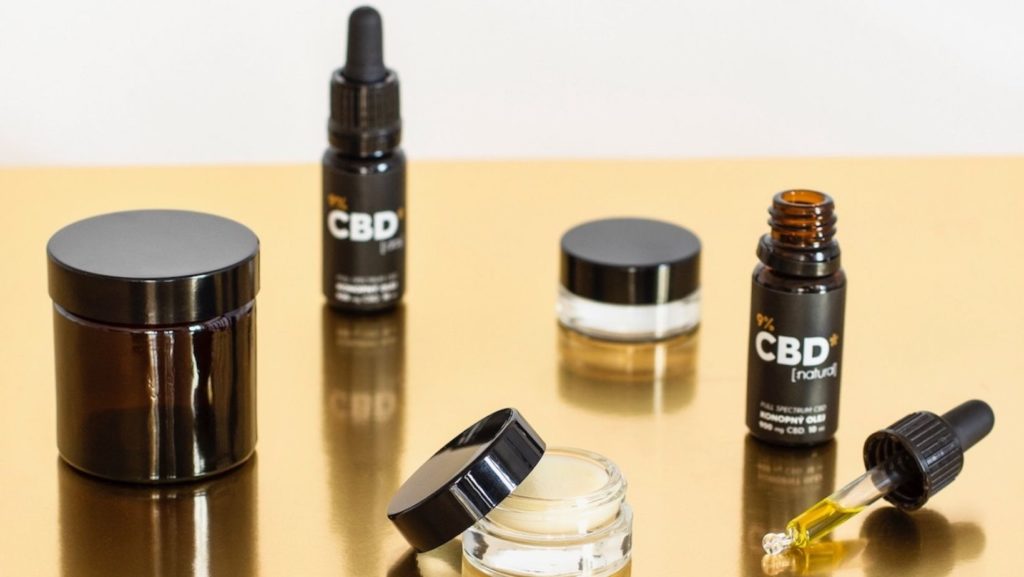The pandemic continues but it’s not a reason not to get out there from time to time. We’ve compiled a list of some memorable spots for your adventurous days in Prague, especially on weekends.
Prokop Valley
Located in the southwestern districts of Prague (Barrandov), lies a whimsical valley that also has two streams flowing freely. Prokop also has a natural reserve, which is quite large and expansive. There are benches for sitting and just lurking about.
Visit in on a good day during this spring, you might just be lucky enough to catch in on a quiet day without too many people around. Be sure to bring a book and a nice cup of tea.
Castle Park in Dolní Počernice
Dolní Počernice is an old village with some quaint and beautiful castles surrounding the area, along with some other establishments like a church, and a watermill.
If you’re looking to experience that old-Europe aesthetic, coupled with a peaceful atmosphere, we recommend that you take a peek. There’s a brewery near the park, which has a takeaway option. Finish off your escapade with a visit to the Nebušická viewpoint. Get a beautiful glimpse of what’s there before finishing your trip, it’s well worth the eye candy.
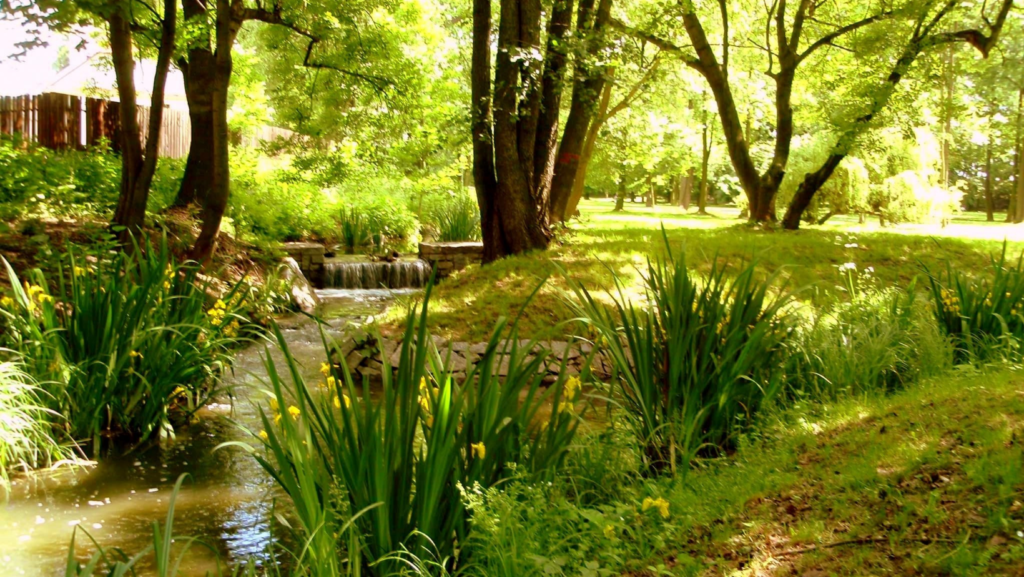
Dolní Počernice
Okoř Castle
This castle is located in the district Praha-západ, and can be found about 15 kilometres from the centre. The castle has been modified a few times and sustained some heavy damage during the 30 Years’ War. It was rebuilt again but has been deserted ever since now all that’s left is its ruins. It is still a beautiful sight and definitely worth exploring.
Sitting in an open field, it’s a perfect area for a hiking trip. Moreover, visitors can take advantage of a quieter setting, which can be refreshing and different from the usual city noises.
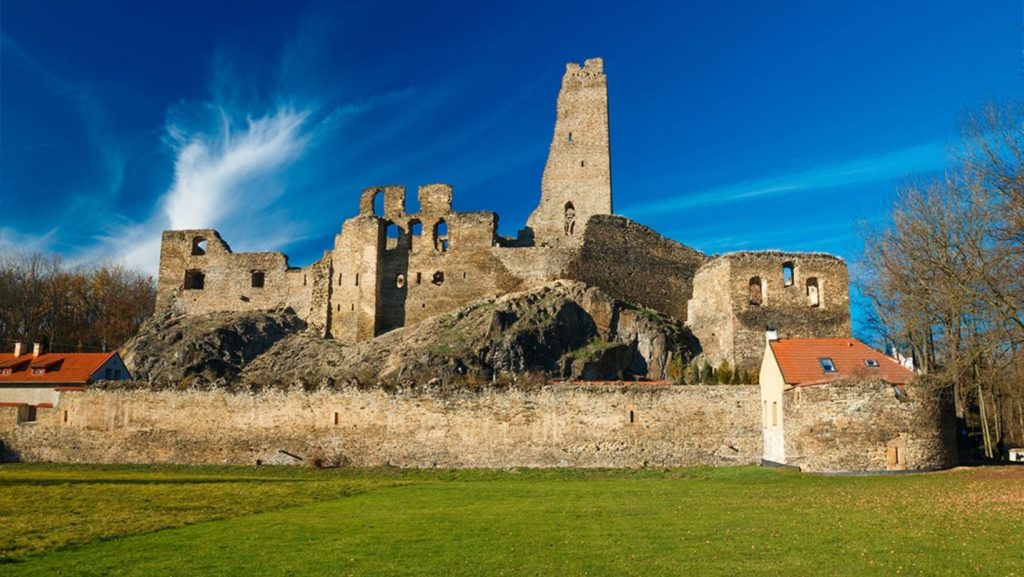
Okoř Castle
Divoká Šárka
Now this area is quite unforgettable. If you’re fond of hikes, views, and are quite proactive, this part of Prague is perfect for you. There are hills you can climb up, and when you reach the summit, you can get a beautiful view of the river, and the interlap of the city. Quite a unique sight.
At the base of the hills, you can enjoy listening to the river’s streams constantly flowing. Moreover, there are paths for everyone to follow to get into the woodsy parts. Definitely one of the areas in Prague you need to visit during spring. It will be in full bloom.

Divoká Šárka
Prague has many beautiful sights and parks around the metropolis. We’ve compiled a list of the ones that might interest those who are trying to avoid the crowds.
Riegrovy Sady is great, but maybe you want a little more peace? Here’s the list.
Vojanovy sady is a small park and garden located behind the Ministry of Finance building in Mala Strana. This garden-park offers strollers beautiful greenery and lush flowers during the spring. Peacocks even lurk around this area, so watch out! Dogs aren’t allowed here for this reason.
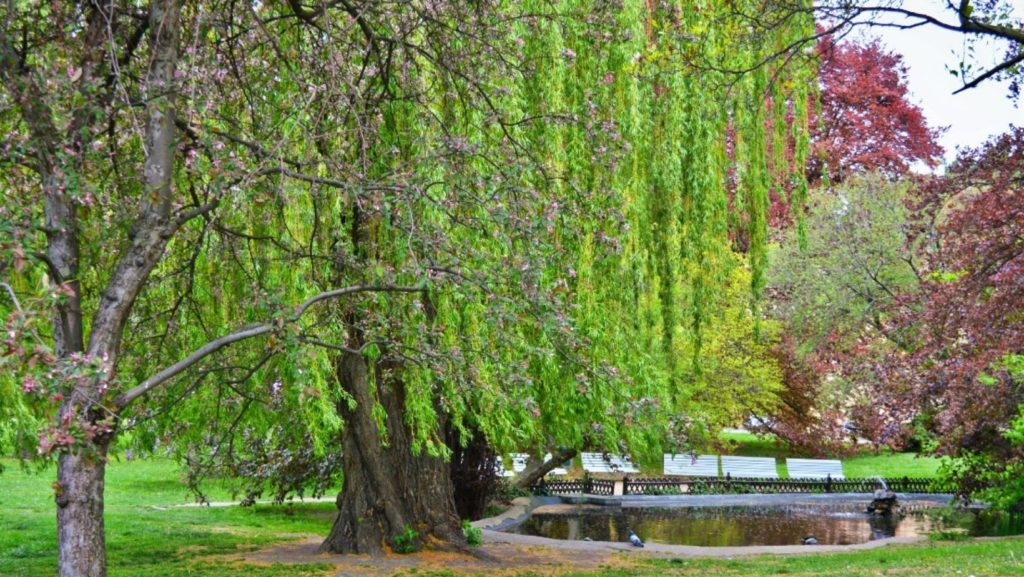
Vojanovy sady
Na Cibulce park is more like a forest than a park, and it’s one of the larger ones. So, get ready to explore and see a lot! It’s located in Prague 5, and the area is quite majestic. There’s an old and abandoned lookout tower, on top of a small hill.
If you go down a flight of stairs from the base of the tower, you can sit on one of the benches and admire the view of the lookout tower from a lower vantage point. There’s also a quaint and lone statue right in front of the benches. Some people have said it’s a statue of Chronos, amongst other things.
If you want to explore a bit more, a tiny stroll across the park, will take you to a picturesque little pond next to a tiny bridge. Beyond Cibulce is a natural park, so it really is the ideal place to spend a whole day walking and enjoying the outdoors during spring.

Na Cibulce
Ladronka is the perfect park to go to for proactive individuals who want to enjoy and partake in a sport during this spring season. You probably can’t enjoy the beach volleyball and football pit just yet, but you can still head on over there for a walk.
Ladronka is also popular for in-line skaters who want to take advantage of the 4.2 km circuit. Need an energy boost – possibly a snack? There’s a delightful restaurant called Ladronka Estate on the park’s grounds as well.
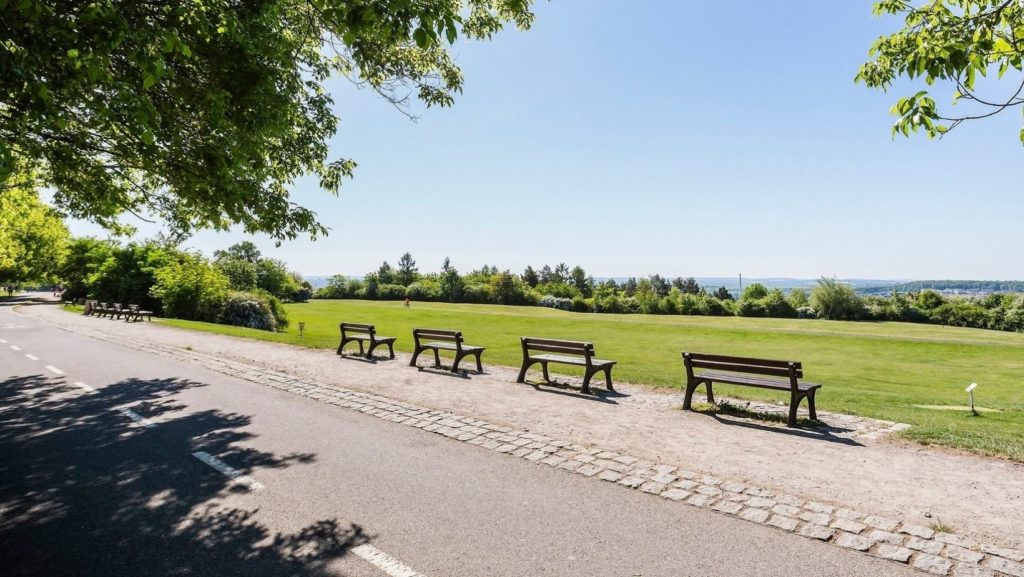
Ladronka
Kuličkové hřiště is a unique-looking playground in Prague 6. Its main attraction is a colorful man-made ‘mini-hill’ that families and kids can play on. The play area even has a little tunnel built through it, for toddlers to use as a passage. It’s definitely worth visiting, especially on a sunny spring day for families.
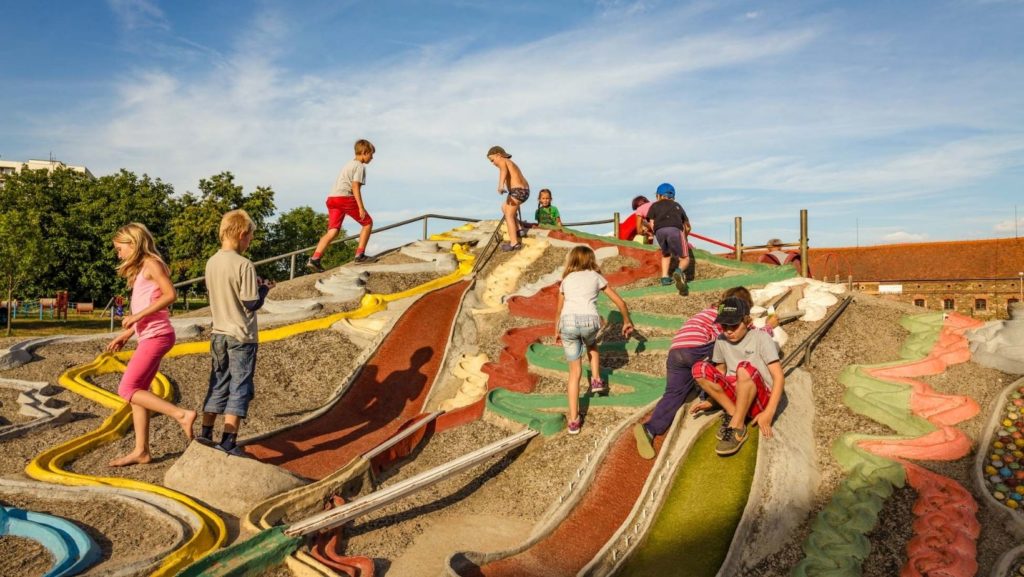
Kuličkové hřiště
Max van der Stoel is a park in Prague 1-Hradčany, with a small and quaint pond, some greenery and a mini-forest. The central focal point of the park is a long, linear water feature that is interactive and a real delight for little ones. Children can also enjoy balance blocks, a rope pyramid, or a barefoot trail. This park is situated on the tram line at Hládkov station.
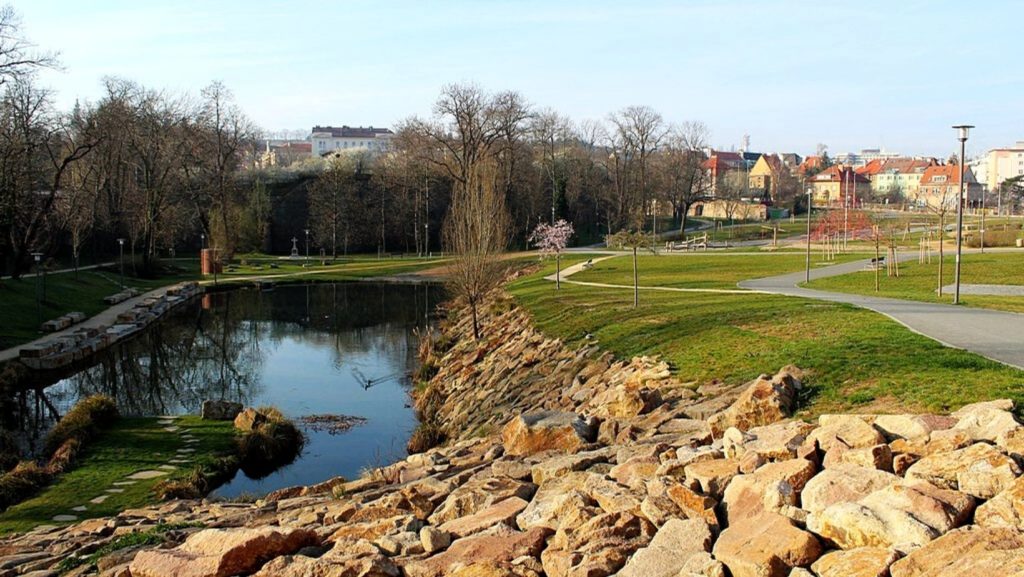
Max van der Stoel Park
For being one of the most idyllic parks in Prague, Stromovka is not as crowded. That’s probably because it is quite a bit off-road, at least in city park standards. Stromovka neighbors Prague Zoo and Troya Castle and Gardens in Prague 7.
The park is huge and beautiful, so there’s a lot of ways to get there. Stromovka offers views, ponds, greenery, a lush stroll, playthings for children, and even skater rinks. There’s also a huge villa situated at the center of the park. You can definitely gawk at it.
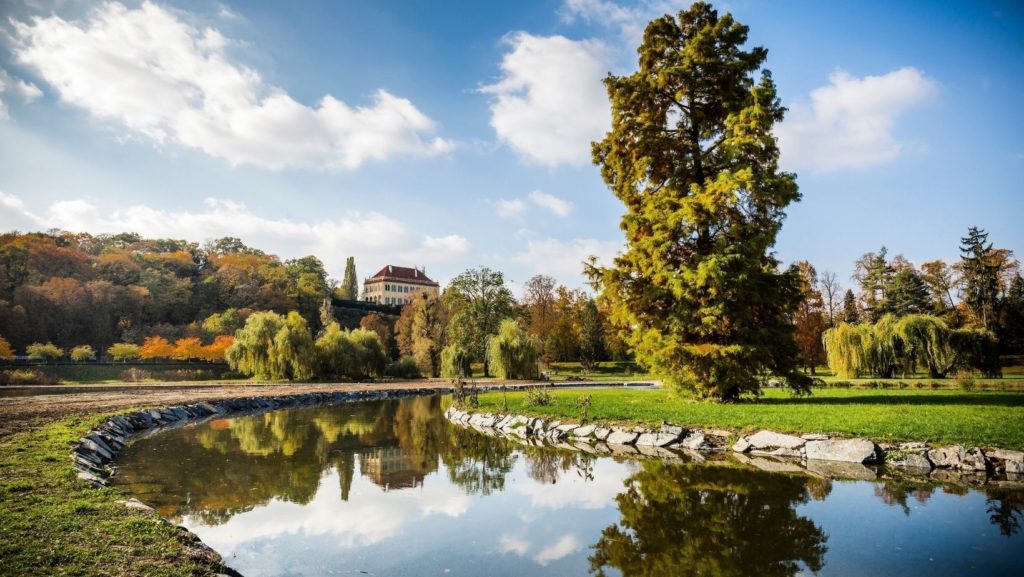
Stromovka
Summers in Prague can be oppressive with highs climbing to near 35 degrees Celsius on occasion.
Especially in the past few years, as the Czech Republic has been getting more tropical weather from the South. But where to go for great ice cream in Prague?
So, here is the top list of my favorite places. They are not in any particular order as I like them all and I buy from one place or another depending on what flavors they have that day and where exactly I’m in Prague at the time.
Crème de la Crème make all of what they sell by themselves. They sell artisan Italian gelato for the ones who want to taste a more refined product. Crème de la Crème has quite an impressive menu. Not only do they guarantee high-quality products, but they also sell a diversified menu for all kinds of customers. They have sugar-free ice cream, sorbets, ven ice creams, seasonal menu items, and classic ice cream. They have three ice cream shops which you can find at:
- Národní 341/23
- Husova 231/12
- Průběžná 1939/58

Creme de la Creme
An Ice cream shop where the staff prides themselves on making high-quality ice cream with no artificial dyes, preservatives, or seasonings. Angelato promises to serve its customers an authentic and delicious brand of ice cream. Angelato has four branches in Prague, so if you’re curious about tasting their product and having some moments of refreshment with your loved ones and family, check them out at these locations:
- Rytířská 27
- Újezd 24
- Bělohorská 50
- Dejvická 24
Grom’s founders originally come from Turin, Italy. They started their journey in 2003, and fast forward to now, they’re making ice cream in Prague. Grom’s staff are experienced gelato creators, and their ice cream springs from authentic Italian taste. Find them at Václavské námestí 55.
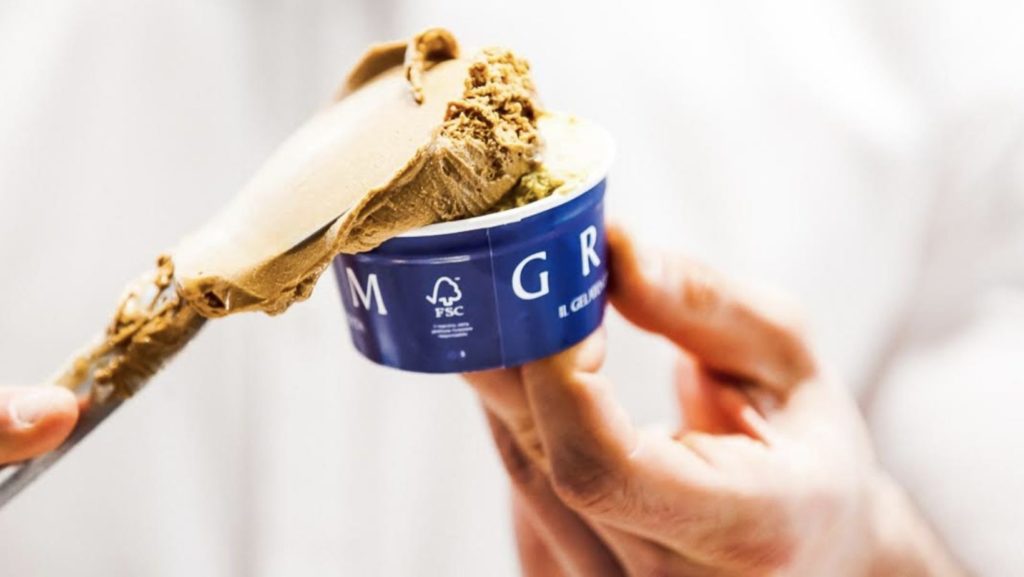
Grom Prague
Saint Tropez is an 80-year-old confectionery that offers sweets but their main product is cake. However, don’t miss out on this veteran and try out their expert-made ice cream. Maybe you can complement it with a cake or a cupcake? Find them at Karlemitská 20.
Another confectionery with an extensively colourful menu of all kinds of sweets. Cukrář Skála’s menu is filled with creative and innovative classics and mash-ups of cakes, ice creams, chocolate bonbons, pastries, and more. They also have a diverse menu on their e-shop for anyone to access. This confectionery serves ice cream on cones, with flavors such as mango, raspberry, chocolate, and even Litchi. Find their products at:
- V Celnici 1034/6
- Dlouhá 727/39
- Spálená 75/16
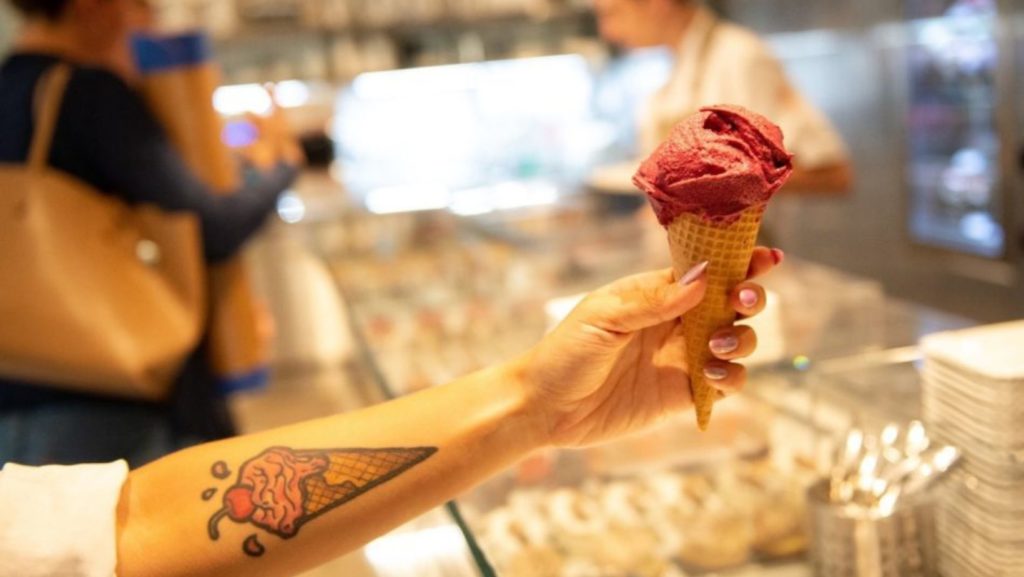
Cukrář Skála
This shop offers fresh-made ice cream made from their own family’s recipes. They started in 2008, and have been providing ice cream ever since. What makes this shop stand out is that 12 ice cream items from their menu will always change, making room for new types of ice cream constantly. This is quite a creative and exciting concept, so we urge you to go try out their products. Find them at:
- Slezská 15
Puro Gelato promises unique and rememberable flavoured gelato, which is sold fresh and made daily in small batches. The creator of Puro’s gelato makes everything with natural ingredients and uses no chemical additives. Ludmila Abrhám offers you a fine gelato experience, hailing from an impressive culinary background. Puro’s products are definitely worth a try.
- Na Hrobci 410/1
- Rybalkova 29
- Na Příkopě 22
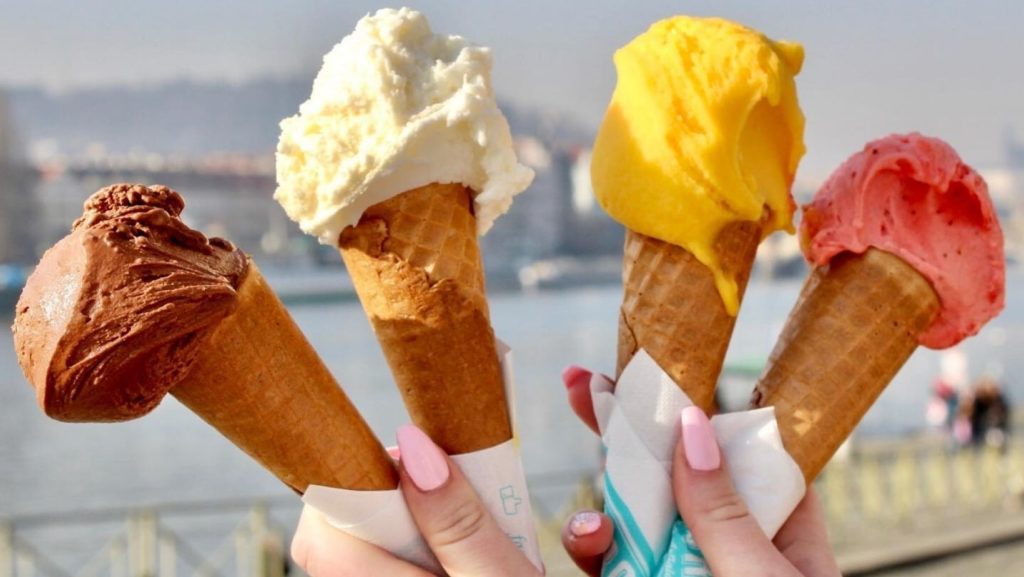
PURO Gelato
The Institute of Physics of the Academy of Sciences and the Prague Public Transport Company (DPP) initiated a sampling and testing of the inside areas of public transport to find out if they can detect the coronavirus.
During the current month, they plan to take around 500 samples from surfaces and the air on buses, trams and metro cars and stations.
The findings of their research should reportedly be available at the end of May.
Workers in protective gear will take swabs from vehicles’ bars, handrails, seats, control buttons, ticket terminals, elevators, stairs, and even benches on platforms.
Moreover, they will also take samples directly from the air, which will be aided by their use of a device that sucks in the oxygen around it, and collects coronavirus particles using a filter.
The samples will then be taken to a laboratory in České Budějovice. They will in turn use newly developed ‘biosensors’ to detect the presence of the coronavirus. The samples taken will also be checked by experts through PCR tests. Results will be drawn to comparison from both the biosensors and the PCR tests.
The biosensors have been developed by Hana Lísalová from the Academy of Sciences. The development of the biosensors began before the pandemic, and was originally opted to be used for research on salmonella, and other pathogenic organisms.
However, when the pandemic emerged, Lísalová found that by modifying it, Covid-19 could also now be detected.
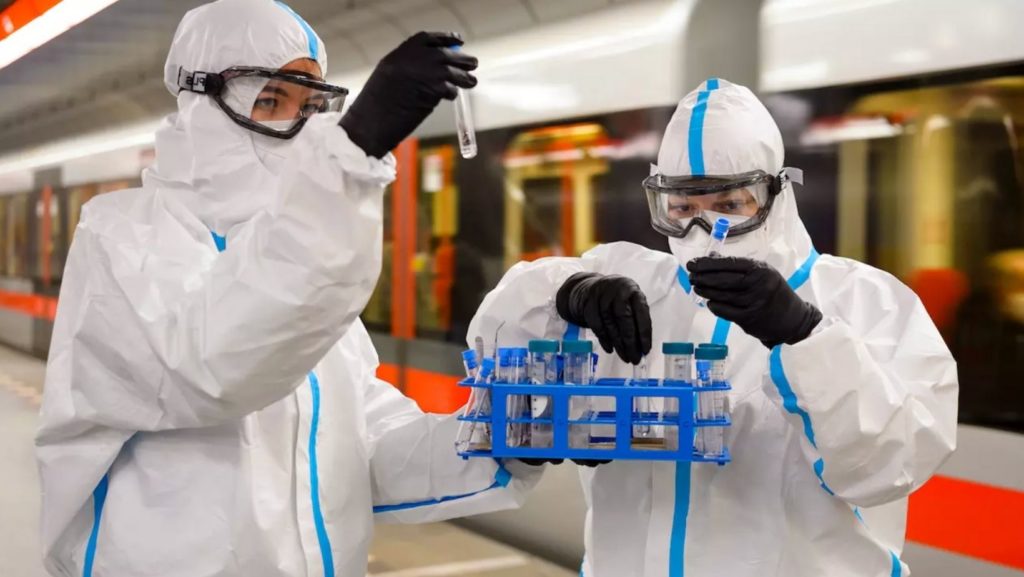
“This is an interesting opportunity for us to test the equipment we are developing in field conditions. The measurement has great accuracy and is able to detect even the remains of a deadly virus,” said Jan Řídký, Vice-President of the Academy of Sciences.
“We often hear comments which claim that public transport is a place where a passenger can become infected. However, there are a number of foreign studies showing that public transport is not a hotspot for infection. That’s why we decided to carry out this study,” said DPP Communications Head Daniel Šabík.
The DPP chose lines and metro stations near major Prague hospitals for collections.
A 4-year-old toddler was brutally attacked by a fighter dog without a leash and muzzle at the Petřín park around noon on Thursday.
A man has admitted himself to the police on Saturday afternoon, claiming he’s not the owner of the dog, said Jan Rybanský, the spokesman for the Prague police.
On the other hand, the man reportedly fled the scene immediately after the dog attacked the child, taking no accountability for the tragedy.
The boy was transported to Motol Hospital, while he was in critical condition. The dog had reportedly left the child with multiple and serious injuries since the dog had suddenly attacked him brutally.
A rescue crew was sent to Petřín park, which supposedly arrived very quickly at the scene. The child was in a dire state, but he was apparently still conscious while he was in the ambulance.
After further examination, they found that the boy had sustained bite injuries on his head, back, and chest. The injuries were life-threatening for such a young and small child. Currently, the toddler has been operated on but is now in an induced coma.
Hospital staff did not want to comment in any further detail on the case, with respect to the patient’s age and family.
Artist Kurt Gebauer has installed a new sculpture at Victory Square in Prague 6 dubbed the ‘Early Capitalism Caterpillar’. The art installation is 11 meters tall.
The sculpture was conceptualized by Gebauer in 1997 but had no financial backup for its installation.
During the communist era, a statue of Lenin stood in place of where the sculpture is now. That statue has since been torn down after the revolution.
“That was supposed to be the joke that the Caterpillar of early capitalism would be where Lenin stood. Even then, it was supposed to provoke a discussion about the state of society. What will this capitalism become? Everything will be eaten or a beautiful butterfly will hatch…,” Gebauer commented.
The sculpture had been installed in numerous places around Prague. Previously in Wenceslas Square, and most recently in front of the Trade Fair Palace, it has now finally reached the initial designated location it was supposed to be on from conception.
The sculpture caused quite a stir and there was a heated debate on the city district’s Facebook page about its installation. Many of the public were quite interested in the price for its installation. Reportedly, it cost the state around 39,000 CZK to install it.
The public has made numerous snide remarks. Most have stated that it reminds them of a condom, while others sarcastically ask if the work is finished or is yet to be completed.
However, the author himself more than welcomes such a discussion of his controversial work. “The work is supposed to be controversial and provoke discussion. It compensates for aggression and human effort to attack something all the time. Now people can argue about whether it’s nice or ugly, whether it couldn’t have been bigger or smaller, or if it’s from a good artist or not – and that’s the way it’s supposed to be,” says Kurt Gebauer.
Czech company Snuggs founded by Linda Šejdová and Tomáš Zahradník only started two years ago, but their yearly turnover in 2020 reached almost 100 million CZK.
Founded in 2019, Snuggs has created a line of underwear aimed at maximum comfort and a sense of security during menstruation.
The reusable underwear helps reduce the amount of waste packaging coming from single-use products such as tampons and pads. Produced based on ethical values, Snuggs has sold around 200,000 products.
“Our mission is not to push out all other alternatives, but we want to offer women another product and provide them with a wider choice,” says Linda Šejdová, co-founder of Snuggs.
Snuggs conceptualized their product when Linda wore menstrual panty products from America. She inspired herself from these products, realizing how sustainable they were. However, the quality of the products did not satisfy her, which led her to the idea of creating her own line of panties.
She got in touch with Tomáš and with the University of Liberec, then started creating.
During the pandemic, the fairly young and successful company has not had as much impending trouble as other companies, surviving and managing to stay afloat because of the fact that menstrual products will always be needed by women, pandemic or not. Production has remained stable.
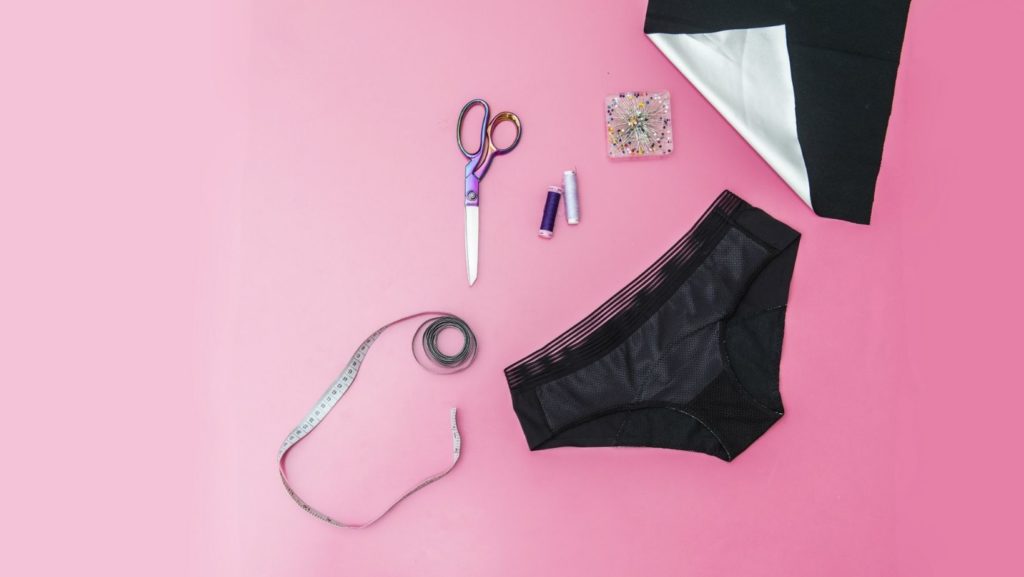
Snuggs’ thriving progress has also been boosted by their collaboration with the DM drugstore, “What is also helping us now is the new cooperation with the DM drugstore, which is a big milestone for us,” says Linda.
Eco-friendly and environmental-centric products are increasingly in demand, as companies and start-up companies want to produce quality products that not only sell, but also help tackle the ongoing pollution and waste crisis, especially with single-use products and plastic products.
Snuggs inspires with their story to think outside the box, and consider the long-term effects of products, whilst simultaneously offering people a choice to use a substantially nature-friendly option.

Linda Šejdová and Tomáš Zahradník

Covid-19 restrictions may impede most of us from visiting other districts in the Czech Republic, but luckily, Prague is a city with a plethora of beautiful and stunning surprises.
If you’ve run out of ideas, here are some curiously pretty and interesting sites to check out for the next time you head out in the city.
Blanka Tunnel ART
The public installation of the Czech-Argentine artist Federica Díaze has become the dominant feature of the new relaxation zone and park in Letna. The installation is located on the concrete surface itself of the Blanka tunnel, which transforms the mere tunnel into a piece of art.
Everything was created thanks to the initiative of local citizens, who have long been troubled by the view of the spacious and untreated concrete exudation of the Blanka tunnel near Stromovka in Prague.
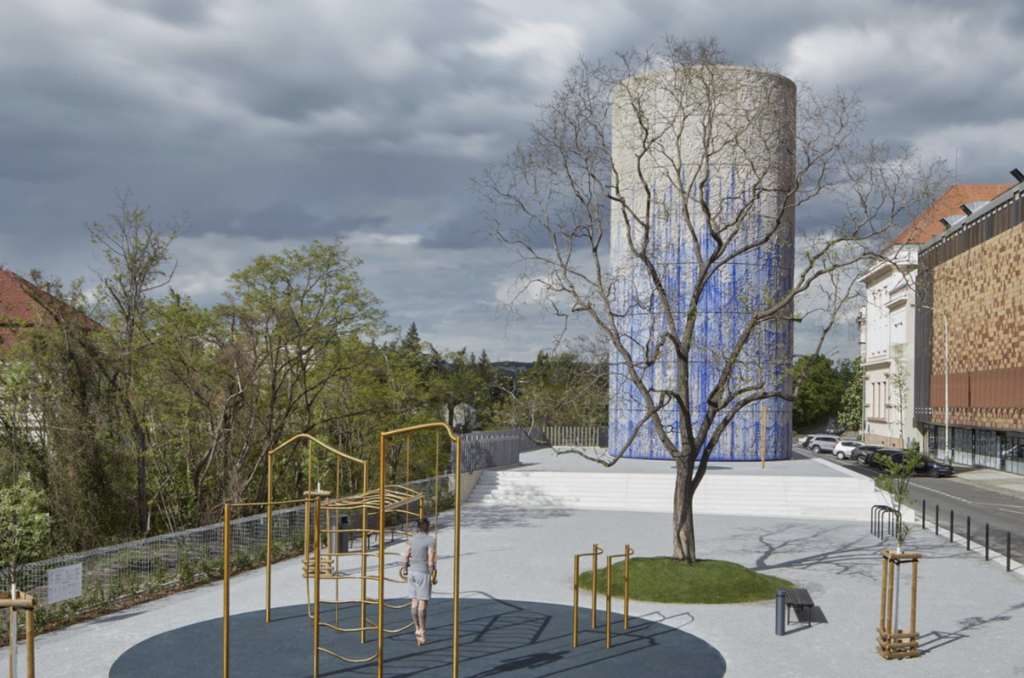
Cemetery in Dolní Břežany
The Břežanský Cemetery is located on the western edge of Dolní Břežany and loosely connects to a park in the city center.
It is an unconventional work that builds on the history of the village with its philosophy. Thanks to this, we will find elements belonging to Celts, Slavs, or Christians. At bird’s view, one can see that the cemetery is in a form of a circle, with oak trees sporadically decorating some parts of it. There’s an inner circle, smaller in circumference, and an outer circle, which is evidently bigger. The circles are formed by cemented blocks.
The site is reminiscent of the famous Stone Henge in England. Zdeněk Sendler is the designer of the unusual space.
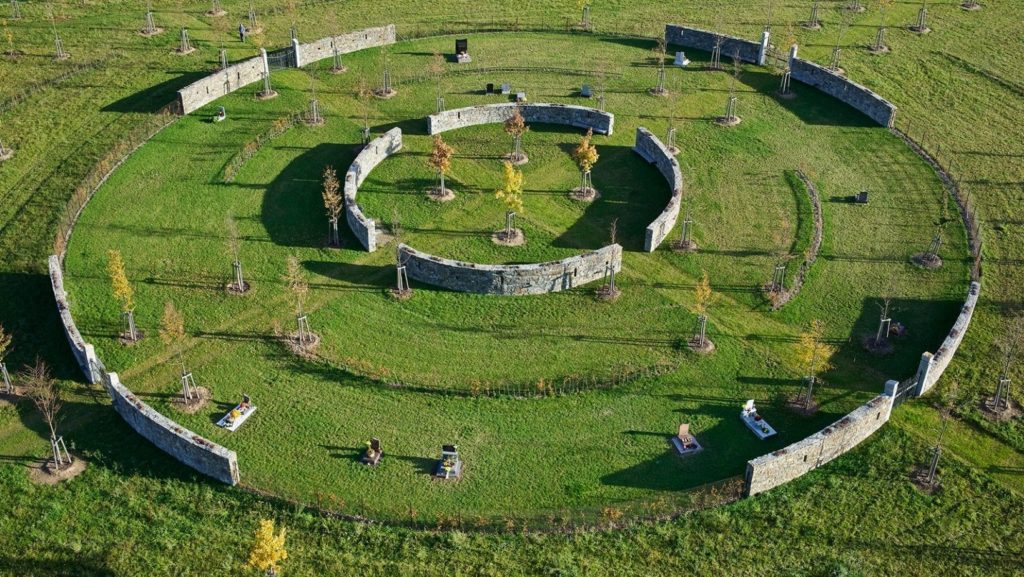
Doubravka Lookout Tower
A few years ago, an extravagant lookout tower was established in Prague 14 Doubravka, by architect Martin Rajniš and his studio Architecture Smelter. The idea of enriching Prague 14 with a lookout tower was conceptualized in 2013.
It came into fruition thanks to investors and direct donations from Prague residents. This unique and peculiar-looking tower stands on Horka Hill, and it’s become famous in the Czech Republic for its’ distinguishable charm.
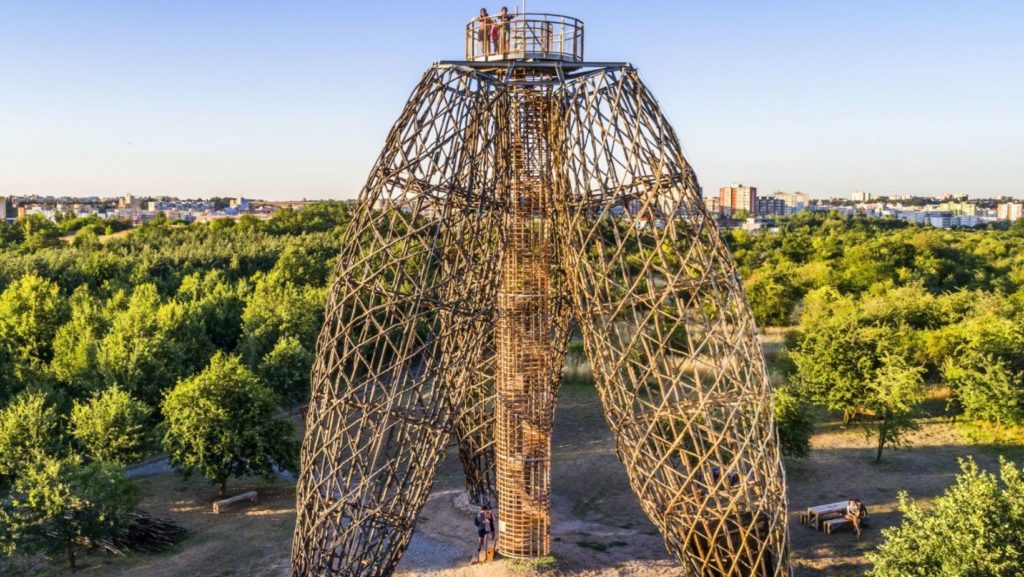
Art in Vyšehrad
If you are looking for a place that is full of inspiring works by young Czech designers, you should not miss the exhibition in front of the Congress Centre in Prague organized by the Association Art District Vyšehrad.
Czech Design Week and the Prague Congress Centre have joined forces to open a unique space in which they are trying to support Czech art.
If you’ve missed visiting exhibitions and museums, this is definitely worth visiting.
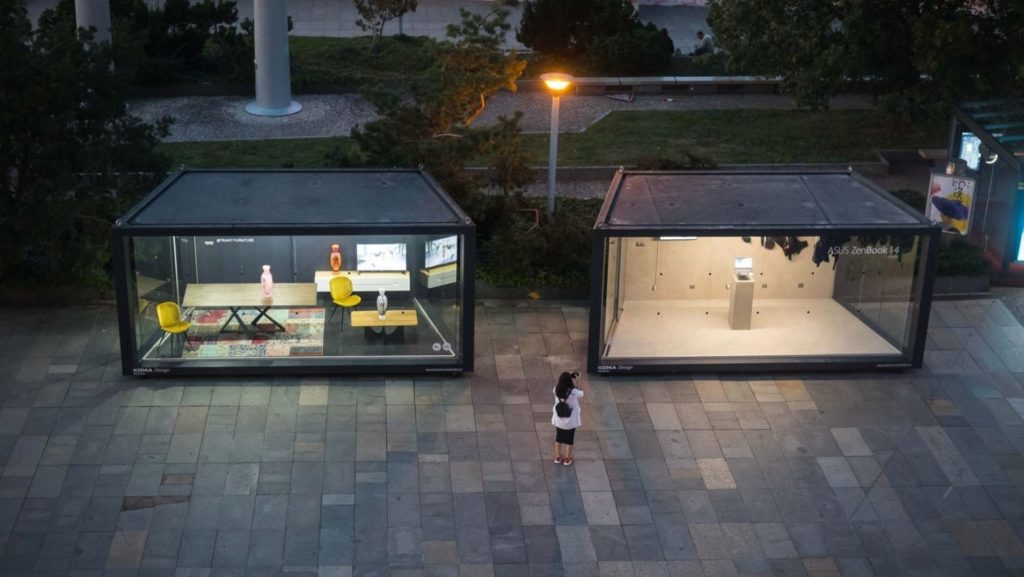
As of March 18, 2021, Prague councilors approved stricter rules regarding buses’ entry into the city center, whilst trucks over 3.5 tonnes are prohibited.
Moreover, the new rules are to drive out irregular sightseeing tours for tourists, often operated by decade-old buses.
Tourist buses will need to have a clear route and timetable. From 1st of July next year, they will also have to meet at least the Euro 6 emission standard.
For a diesel vehicle to be Euro 6 compliant, it can’t emit more than 80mg/km of NOx (nitrogen oxides) gases, while a petrol vehicle can emit no more than 60mg/km.
According to the city management, before the pandemic, the intensity of commercial bus traffic was such that the center was jam-packed and saturated.
Councilors were also guided by efforts to improve the atmosphere, “When people from all over the world start to discover the beauties of Prague again, tourist bus operators will no longer do what they want in the streets of Prague,” says Scheinherr.
The regulation of bus transport in the center of Prague took place in the 1990s. In 1999, a zone was established for the prohibition of entry of trucks over 3.5 t and buses.
Operators may, however, obtain approval for entry, which has so far been decided by the director of the municipal department of roads. The councilors, therefore, wanted to give clear rules to the decision-making.
The zone will allow entry for buses with a public commitment, buses going to schools for children or retirement homes for the elderly, and one-off accommodation facilities with more than 50 beds.
Growing conflicts over government restrictions and measures are rising.
This week, around 20 people in Smichov were busted for hiding in a bar on Saturday night of March 13.
Recently, another confrontation made headlines, when a small business owner prohibited a woman to enter his shop with her child, even when the woman was wearing a mask. This happened at a pet store in Bruntál (Moravian-Silesian Region).
The woman was banned from entering his shop because she refused to leave her child to wait for her outside shop.
The woman filmed the conflict and posted the video on social media.
According to government regulation, only one customer per 15 m² of sales area may be in stores, but for the small stores that do not even take up 15 m² square of space, this does not apply to children under 15 years of age, and for others to children under six years of age.
The shop owner has been criticized and reprimanded for his actions, especially since the video of the confrontation between him and the woman surfaced online, but he persists and stands his ground.
Reportedly, he has had a tragic experience in his family caused by the Covid-19 virus. His 2-year-old granddaughter had apparently infected her father, who almost didn’t survive.
On the other hand, the shop owner and his wife are reportedly very sickly seniors. They worry that the virus could make their underlying illnesses worse.
There’s a rising air of intolerance, rebellion and selfishness between civilians. Police inexperienced with these situations also amplifies this ongoing turbulence.
Evidently, people are getting increasingly worried about the virus not disappearing, whilst others are becoming greatly frustrated about the continuation of the lockdown restrictions.
Jan Masaryk, the Foreign Minister of Czechoslovakia in the 1940s of Czechoslovakian descent, died on March 10, 1948, in the courtyard of the Černín Palace in Prague.
He fell to his death and was found outside, his corpse laid below his bathroom window.
The case of Masaryk’s death has remained unsolved until now, with authorities failing to reach a conclusion. Unfortunately, police have decided to shelf the case, meaning it will remain a cold case for an indefinite amount of time.
Masaryk’s death according to official ruling states that he committed suicide, but his case has been reopened several times, and each time three possible scenarios have been hypothesized and considered: murder, accident, or suicide. All previous investigations concluded that the first investigation was ‘sloppy’ and poorly executed and wrapped up. The first investigation ruled our Masaryk’s case as death by suicide.
March 10 2021, just yesterday, was the 73rd anniversary of Masaryk’s death, and Michal Muravský, Prague Public Prosecutor and supervisor of the Masaryk case, sheds insight on the updates of the investigations in an interview with Czech news reporters.
“Even the supplementary investigation failed to establish such facts that would allow a clear conclusion to be drawn on the circumstances of Jan Masaryk’s death,” states Muravský.
The technical question of the cause behind the fall was dealt with by an expert in forensic biomechanics, according to Muravský.
“The conclusion of the expert is that possible variants of accidental fall due to loss of stability and active participation of another person or persons are permissible by pushing into the torso of Jan Masaryk facing the wall of the Černín Palace,” states Muravský.
The expert also commented that the possibility that Masaryk was already dead when he was thrown out his bathroom window, therefore someone had to throw out his corpse, is unrealistic.
An investigation of Masaryk’s death in 2001-2003 concluded that he had been murdered, but the current investigation’s findings are not so decisive, so the possibility of reasons besides murder as a cause of death are not completely disregarded.
Muravský states the investigation is over for now and that they have reportedly exhausted all available options.
CBD-based company CBD Star tripled their business’ profit and success during the pandemic, due to the rise of demand for their products.
CBD Star is operated by Brno entrepreneurs David Binko and Dragan Gašić, and their company grew by 300% in the last quarter of 2020.
Surprisingly, the pandemic helped the company. “Christmas and the second wave of lockdown were crucial to our business. CBD helps with soothing the body, relaxing, better sleep, and at this point in time there was a great demand for our products,” explains Dragan.
The idea to produce CBD products was conceptualized by the duo a long time ago, with the help of friends’ suggestions. Both of the entrepreneurs already knew the benefits of cannabidiol and had the idea of going into production for the domestic Czech market.
In terms of operation, Dragan handles marketing, while David handles business and production.
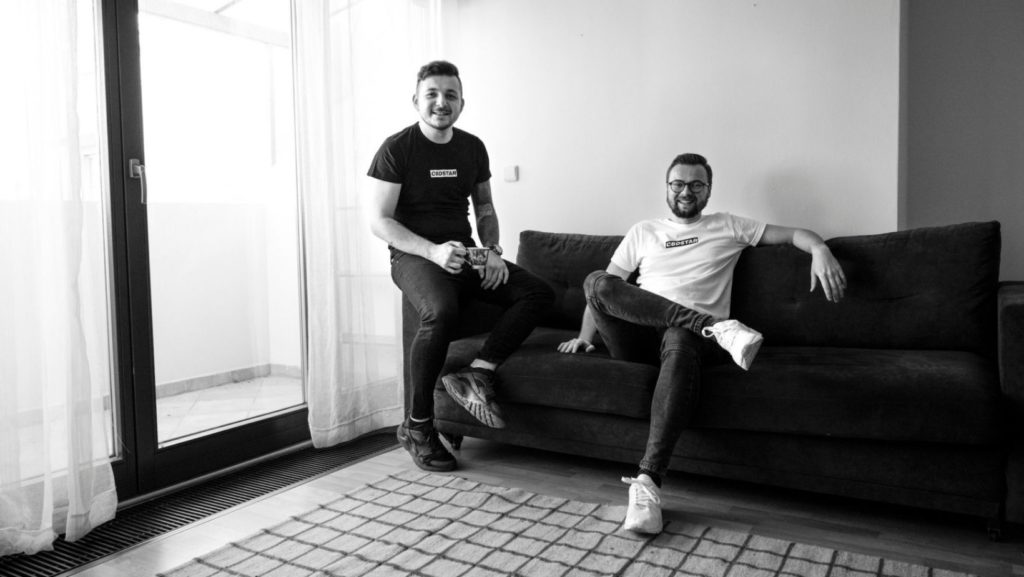
David Binko and Dragan Gašić, founders of CBD STAR
“We place emphasis not only on the organic composition of our products but above all on the high content of the active substance CBD, which, unlike the more well-known THC, is not psychotropic and therefore does not cause mind numbness,” says David.
CBD Star products contain 10 percent cannabidiol in 10-milliliter packs, or 1,000 mg of the substance in one bottle, which David and Dragan say is the ideal amount to provide the necessary effects.
The company produces its products from hemp grown in organic quality in sunny fields in Croatia.
The goals of the company go beyond selling only dietary supplements, CBD star also aims to produce cannabis cosmetics. They recently introduced their first product in this genre – body balm, which helps with the treatment of skin problems such as eczema.
The plan is to open the first brick-and-mortar branches so that customers can try the products for themselves. They want to start expansion in Eastern Europe too but are waiting for the pandemic situation to calm down.
